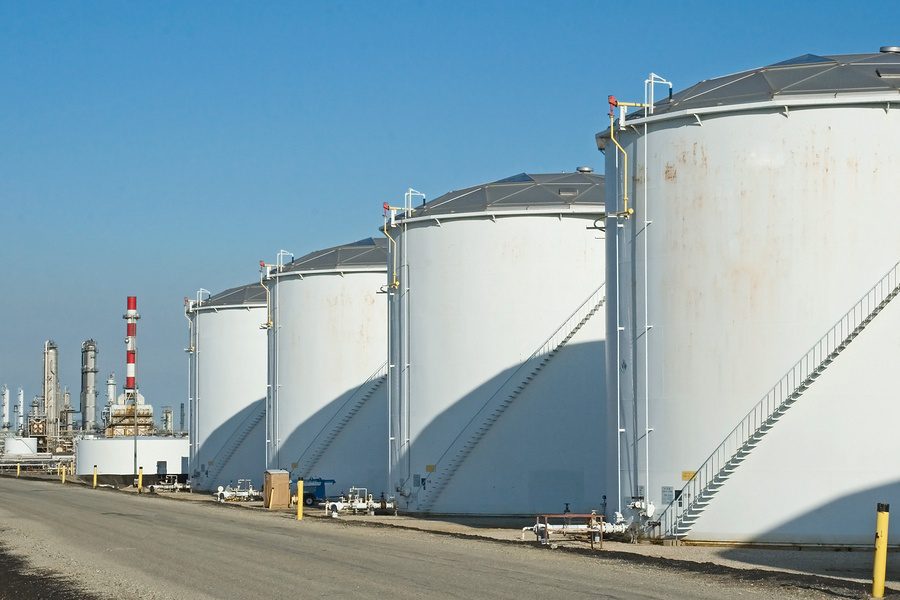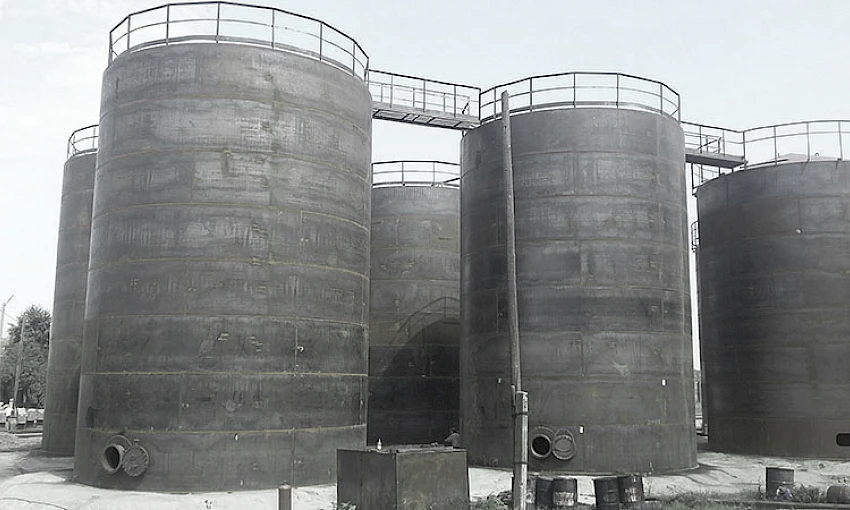All Regarding Welding Evaluation: Key Benefits for Your Tasks
Welding examination plays a necessary function in the building and manufacturing sectors. It ensures that welded joints fulfill top quality and security standards. By recognizing flaws early, projects can avoid economic losses and substantial delays. Abiding by sector guidelines not just protects the honesty of the end product however also constructs count on amongst stakeholders. Comprehending the nuances of this procedure reveals fringe benefits that can affect project results considerably. What are these advantages?
Understanding the Welding Examination Process
Although welding is a critical element in numerous markets, the examination process is crucial to ensure top quality and safety. This process entails a series of methodical evaluations created to identify any type of possible concerns that may jeopardize the honesty of welded joints. Inspectors evaluate welding treatments and credentials to validate conformity with industry standards.
Following this, visual evaluations are carried out to analyze the total look and coating of welds. Non-destructive screening techniques, such as ultrasonic or radiographic testing, may also be employed to discover interior problems without harming the material. Paperwork plays a critical duty, as it gives a document of searchings for and assessments, validating traceability and liability.
Eventually, comprehending the welding assessment process promotes confidence in the quality of the ended up item, lowers the threat of failings, and improves general project success in various applications, from construction to production. API 650 Welding Inspection.
Usual Kinds Of Welding Problems
Welding defects can greatly influence the stability and performance of welded frameworks, as they may lead to failings under anxiety or unfavorable conditions. Usual kinds of welding problems consist of fractures, porosity, incomplete blend, and slag addition. Cracks can create because of thermal tensions or inappropriate air conditioning, compromising the joint's toughness. Porosity refers to the visibility of gas bubbles caught in the weld, which can weaken the joint and lower ductility. Incomplete blend happens when the weld steel does not appropriately bond with the base material, causing vulnerable points. Slag incorporation occurs when non-metallic contaminations end up being trapped within the weld, causing a reduction in structural integrity. Identifying these issues early with evaluation is essential for preserving quality and making sure safety in welded frameworks. Understanding these typical defects enables for boosted welding techniques and improved task outcomes.
Value of Conformity With Industry Criteria
Conformity with sector standards is vital for keeping structural stability in welding jobs. Following these standards not only minimizes liability dangers however additionally enhances the overall quality of the finished work. This positioning cultivates trust fund among stakeholders and guarantees that projects satisfy both security and efficiency assumptions.
Making Certain Architectural Honesty
Guaranteeing structural integrity is critical in any type of building or production job, as adherence to market requirements offers as a structure for security and integrity. Conformity with these requirements assurances that welding refines satisfy extensive specs, which is necessary for the longevity of frameworks. Normal welding examinations confirm that techniques and materials straighten with developed standards, avoiding prospective failures that can endanger stability. Furthermore, following sector criteria advertises consistency in high quality, which is important for preserving public count on construction methods. By focusing on structural integrity through thorough adherence to standards, companies can enhance the total efficiency of their projects, leading to more secure atmospheres and prolonged property life expectancies. Ultimately, this dedication shows a proactive strategy to high quality assurance in welding methods.
Lowering Obligation Risks
Sticking to market criteria significantly mitigates responsibility risks related to welding projects. Conformity with established standards guarantees that welds satisfy safety and efficiency standards, decreasing the likelihood of failures that can lead to crashes or litigation. This aggressive method not just protects the workforce yet also safeguards the monetary passions of the company. Subpar techniques or inadequate evaluations can cause pricey repair work, lawful disagreements, and damage to credibility. By carrying out rigorous welding evaluations, business show their dedication to top quality and safety, eventually lessening direct exposure to possible cases. In addition, adherence to policies strengthens depend on amongst stakeholders and customers, as it shows a dedication to maintaining high standards throughout the project lifecycle. Decreasing obligation dangers is crucial for long-term business sustainability.
Enhancing Project Quality
Extensive welding assessments not only reduce obligation risks but additionally play a crucial duty in improving overall project top quality. By sticking to market standards, these inspections guarantee that welds fulfill defined requirements for toughness, security, and sturdiness. Compliance with developed standards assists identify issues early, lowering the chance of expensive rework or job hold-ups. Additionally, constant quality assurance promotes count on among stakeholders, including customers and regulative bodies, which can cause duplicate business and positive references. Eventually, a dedication to top quality welding methods not just improves the stability of the last item but likewise promotes the credibility of the company involved. Complete evaluations serve as a keystone for sustainable and successful job results.
Effective Benefits of Early Detection of Concerns
Early detection of welding concerns offers significant benefits, specifically concerning expense savings on repair services. By determining troubles prior to they escalate, organizations can enhance the architectural stability of their projects. This aggressive method not only minimizes financial expenses yet likewise promotes safety and reliability in bonded frameworks.
Expense Savings on Repairs
Spotting welding concerns without delay can cause considerable cost financial savings on fixings. Early recognition of problems enables targeted treatments, lessening the extent of damages and protecting against expensive, comprehensive repairs later. When issues are addressed throughout the preliminary phases of a task, sources are utilized extra effectively, decreasing try this site both labor and product expenses. Additionally, prompt assessments can prevent job delays, which usually incur added costs. By rectifying problems early, companies can prevent the financial burden related to rework, service warranty claims, and possible safety dangers. Ultimately, purchasing aggressive welding evaluations cultivates a more economical approach to job monitoring, ensuring that budget plans continue to be intact while preserving the top quality and reliability of the end product.
Enhanced Architectural Honesty
Ensuring the structural honesty of bonded components hinges on the prompt recognition of possible issues. Early detection throughout the welding examination process enables the instant correction of issues such as cracks, voids, or incorrect combination. Resolving these issues promptly not only boosts the strength and toughness of the weld yet also mitigates the risk of devastating failures during the service life of the structure. Routine assessments add to an extra trusted analysis of weld top quality, making certain conformity with sector criteria. By focusing on welding examinations, task supervisors can preserve a greater level of security and performance, ultimately leading to successful job results. Enhanced structural honesty mirrors the dedication to high quality and adherence to finest techniques in welding.
Cost-Effectiveness of Welding Inspections
While several business might view welding inspections as an additional expense, they frequently show to be a cost-effective investment in the lengthy run. By recognizing flaws early, these evaluations can stop expensive repair services or replacements that might arise from undetected concerns. This aggressive approach not just saves money yet likewise minimizes task delays, ensuring that timelines are stuck to.

Top quality welding examinations contribute to enhanced performance, leading to fewer rework instances and boosted productivity. The decrease in product waste and labor costs connected with remodeling defective welds contributes to the financial benefits.
Spending in comprehensive assessments additionally enhances the general top quality of the end product, which can lead to boosted client satisfaction and repeat company. Inevitably, the initial costs connected with welding inspections are typically outweighed by the lasting savings and benefits they supply, making them a sensible option for any welding job.
Enhancing Safety and Reliability in Welding Projects

Welding evaluations play a crucial duty in improving safety and security and reliability within welding projects, as they systematically recognize prospective threats and weak points in welds. By employing certified examiners, organizations can assure that welding procedures stick to sector requirements and regulatory needs. This positive approach decreases the danger of weld failures, which can cause mishaps, costly fixings, and job hold-ups.
Inspections supply important documents that proves conformity and quality guarantee, fostering trust fund between stakeholders. Routine analyses during different job stages enable the prompt discovery of issues, making it possible for corrective actions prior to they rise. Additionally, the understandings obtained from evaluations add to continual improvement in welding methods, boosting total project results. Inevitably, robust welding assessment methods not just protect workers however additionally safeguard investments, ensuring that jobs are finished efficiently and fulfill the highest safety and dependability requirements.
Regularly Asked Inquiries
What Credentials Should a Welding Inspector Have?
A welding inspector ought to possess appropriate qualifications, such as Qualified Welding Assessor (CWI), in addition to extensive knowledge of welding materials, processes, and codes. API 650 Welding Inspection. Experience in the area and solid logical abilities are additionally crucial for effective examinations
Exactly How Typically Should Welding Inspections Be Performed?
Welding examinations ought to be performed frequently, typically before, throughout, and after the welding procedure. The regularity may depend on task requirements, regulative demands, and the complexity of the welds to assure architectural stability and safety.
Can Welding Inspections Be Performed From Another Location?
Welding assessments can undoubtedly be carried out from another location, making use of sophisticated technologies such as drones, electronic cameras, and ultrasonic screening equipment - API 650 Welding Inspection. This strategy permits for effective monitoring while lessening the requirement for physical visibility at the website
What Tools Are Made Use Of in Welding Inspections?
Welding assessments utilize numerous index tools, consisting of ultrasonic testers, magnetic bit testers, visual assessment tools, radiographic tools, and calipers. Each tool offers a certain purpose to assure weld stability, top quality, and compliance with sector standards.
Just how Do I Choose a Welding Inspection Solution?

To choose a welding assessment straight from the source solution, one ought to review qualifications, experience, and qualifications. Additionally, examining customer reviews and asking for thorough service descriptions can aid guarantee the selected solution fulfills specific project demands properly.
By prioritizing welding evaluations, task supervisors can maintain a higher level of security and efficiency, inevitably leading to successful project results. Welding assessments play an important function in improving safety and security and integrity within welding projects, as they systematically identify prospective dangers and weak points in welds. A welding assessor need to possess relevant accreditations, such as Licensed Welding Examiner (CWI), along with substantial expertise of welding procedures, codes, and products. Welding evaluations ought to be conducted frequently, normally in the past, throughout, and after the welding procedure. Welding evaluations use different tools, including ultrasonic testers, magnetic fragment testers, aesthetic assessment devices, radiographic devices, and calipers.